Creating paths and walkways through forested areas of your yard is a great way to wander through without disrupting plants and wildlife. It also gives people a safer route so they are not accidently having an encounter with a snake or other potentially dangerous animal. Shaded gardens or heavily treed areas are sometimes thought to be challenging, however there are many plants suited for this type of environment. A few come to mind that I've listed below. These photos show just how beautiful an area can be that gets some dappled light. I hope it inspires you not to chop down your trees, but to work with them. This is especially true if you live in a area that has an abundance of them, like here in the South.
xo
Cathleen
10 Great Plants for Shade
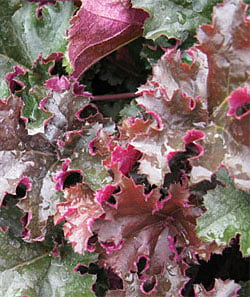 Chocolate Ruffles Heuchera
Chocolate Ruffles HeucheraHeuchera (Coral bells). Heucheras make fine plants for shady sites. Plant breeders have had a field day with the genus heuchera. There seems to be no end to the variations in leaf color: silvery, burgundy, purple-black, chartreuse, salmon and rusty orange. With heuchera, its the foliage that provides the visual excitement, though some varieties also have showy flowers on tall, slender stems. The variety in the photo is called Chocolate Ruffles.
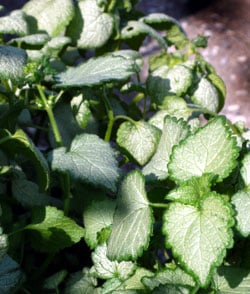 Lamium
LamiumLamium maculatum (Dead nettle). A low, spreading plant with silvery foliage and purple, pink, red or white blooms in early summer. In shady locations, I find this plant spreads happily — not invasively. If you wind up with too much of it, just give it a tug, lift out a whole section and pass it on to a friend.
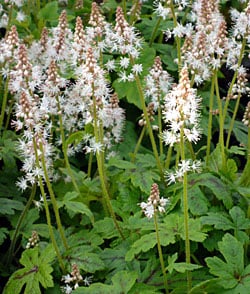 Tiarella
TiarellaTiarella cordifolia (Foamflower). Similar to heuchera in leaf and form, tiarella has matte rather than shiny leaves, which gives it a slightly more "natural" look. The bottle-brush flowers are white or pale pink and I find them showier than those of most heucheras. New varieties often feature burgundy-red leaf veins.
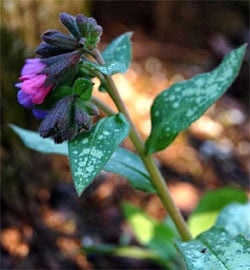 Pulmonaria
PulmonariaPulmonaria (Lungwort). Another plant with beautiful silvery foliage. Leaves are typically long and narrow, and may be entirely silver, spotted with silver or randomly splashed with silver. Lungwort flowers in spring and its blossoms are quite showy, ranging in color from white through pink and blue — with different colors often appearing on the same plant.
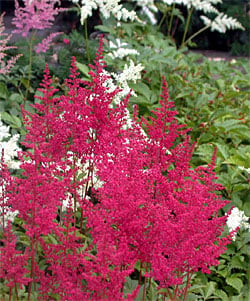
Astilbe. Known best for their colorful flower plumes, many of the newer astilbe varieties also have showy foliage that may be bronze, pale green, blue green, dark green or wine red. If you choose varieties with different foliage colors, bloom times and heights, they can add lots of interesting color and texture throughout the season.
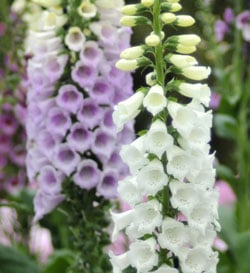 Foxglove
FoxgloveDigitalis (Foxglove). Most foxgloves are biennials, which means they spend their first year growing foliage, their second year flowering and then they die. This may sound troublesome, but the plants usually reseed and sort things out so you wind up having flowers every year. I find Digitalis grandiflora the easiest and most reliable of the bunch.
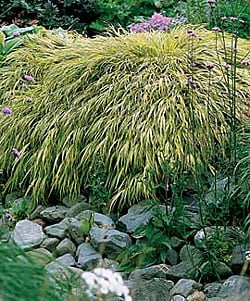 Japanese Forest Grass
Japanese Forest GrassHakonechloa (Japanese forest grass). Unlike most grasses, this one grows best and looks best in partial shade. It's short (12-15") and clump-forming, and the narrow leaves have a cascading habit. Depending on the variety, its foliage is golden green, lime green or variegated. Some turn red, orange or purple in the fall.
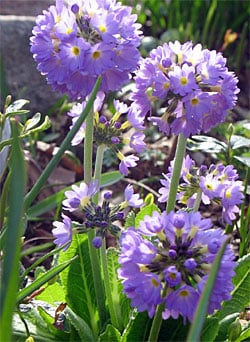 Primula
PrimulaPrimula (Primrose). I always thought primroses were difficult to grow, but I've found them to be super easy as long as you provide shade and moist soil. There are 425 species of primula. They come in every color of the rainbow and range in size from little 3-inch dwarfs to 4-foot giants. The photo shows Primula denticulata, also known as the drumstick primula. Colors range from white through lilac, pink and deep red.
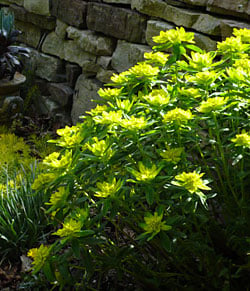 Euphorbia Polychroma
Euphorbia PolychromaEuphorbia (Spurge). The beautiful, burgundy-leaved Euphorbia dulcis does self sow, but the seedlings can be easily removed (and given to appreciative visitors). I also like Euphorbia polychroma (shown at left), which is a dome of chrome yellow in late spring. In zones 5 and warmer, try Euphorbia polychroma 'Bonfire', which has three seasons of color. A variety named Jessie grows up to 4 feet tall.

















